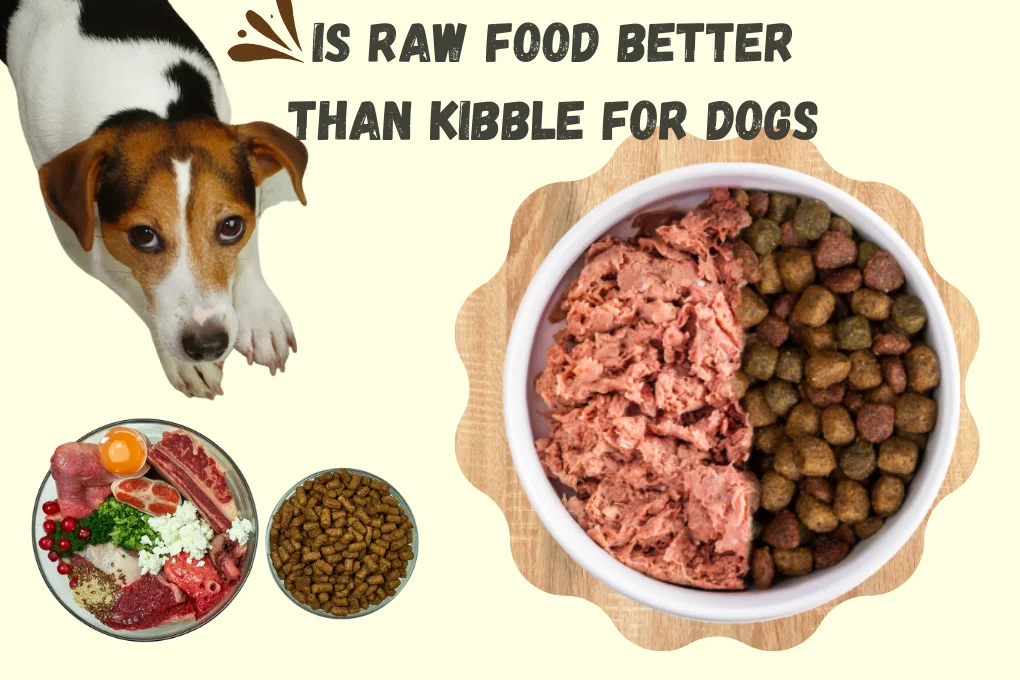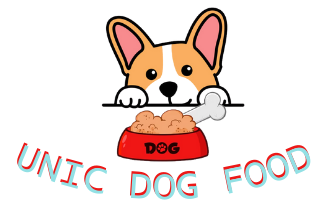Is Raw Food Better Than Kibble For Dogs? This question creates controversy in the minds of many pet owners. The debate is heated, and opinions vary widely.
From my experience and research, it’s not a one-size-fits-all answer. Each dog is unique, and their nutritional needs can differ.
I’ve seen dogs thrive on both diets, but it’s crucial to consider factors like age, health, and activity level.
Raw food diets are praised for their natural ingredients and lack of preservatives, potentially leading to better health outcomes for some dogs.
However, kibble offers convenience and balanced nutrition that’s hard to match. Ultimately, the best choice depends on your dog’s needs and lifestyle.
Do Vets Recommend Raw Food?
Veterinarians’ recommendations on raw food diets for dogs can vary significantly.
Some vets advocate for raw diets, highlighting potential benefits such as improved dental health, healthier skin and coats, more energy, and smaller stools.
They argue that raw diets more closely mimic what dogs eat in the wild, potentially leading to better overall health.
Professional organizations like the American Veterinary Medical Association (AVMA) have issued policies discouraging raw diets for pets due to these health risks.
Yet, some vets might still support raw feeding under certain conditions, such as when it’s commercially prepared under strict hygiene standards or when pet owners follow rigorous guidelines to minimize risks.
I’ve noticed it depends on the individual vet’s perspective and the dog’s specific needs. Always consult with your vet to make the best decision for your pet.
Is Raw Food Better Than Kibble For Dogs?
I’ve learned it’s not about universally better but what suits your dog’s needs and lifestyle.
Raw food, with its unprocessed ingredients, can lead to shinier coats, healthier skin, and more energy.
However, it requires careful handling due to the risk of bacteria and ensuring it’s nutritionally balanced.

On the other hand, kibble is convenient, cost-effective, and designed to meet all of a dog’s nutritional needs. But, it often contains preservatives and fillers.
The best choice depends on your dog’s health, dietary needs, and ability to manage the diet’s demands.
I recommend consulting a vet to tailor the diet to support your dog’s healthiest life.
Understanding Raw Food Diets
Raw food diets for dogs typically comprise raw meat, bones, fruits, and vegetables. This diet mimics a dog’s natural ancestral eating patterns.
Proponents of raw food argue that this diet offers numerous benefits, including:
✔ Enhanced Nutritional Value: Raw foods are rich in nutrients not destroyed by cooking. This means dogs receive more vitamins, minerals, and enzymes essential for their health.
✔ Improved Digestion: Many dogs on raw diets experience fewer digestive issues, as raw foods are easier to break down and absorb.
✔ Healthier Coat and Skin: Raw food’s natural fats and oils contribute to a shinier coat and healthier skin.
✔ Dental Health: Chewing raw bones can help reduce tartar build-up and promote healthier gums and teeth.
The Case for Kibble
Kibble, or dry dog food, is a convenient and widely used option for feeding dogs. It offers several benefits, including:
✔ Convenience: Kibble is easy to store and serve, making it a go-to option for busy pet owners.
✔ Cost-Effectiveness: Compared to raw diets, kibble is generally more affordable and accessible.
✔ Long Shelf Life: Dry food can last months, reducing waste and purchasing frequency.
✔ Dietary Consistency: Kibble provides a consistent nutrient profile in every bite, which can be beneficial for managing specific health conditions.
Comparing the Benefits and Drawbacks
When considering raw food and kibble, weighing each diet’s benefits and drawbacks is crucial.
Raw food diets offer enhanced nutritional benefits and closer adherence to a dog’s natural eating habits.
However, they require more time, effort, and expense to prepare.
Additionally, there’s a risk of bacterial contamination with raw meats, posing health risks to pets and their owners.
Conversely, kibble is convenient and economically efficient but may contain artificial preservatives, colors, and fillers with little nutritional value.
The high-heat processing of kibble also diminishes its nutrient content, potentially leading to the need for synthetic nutrient supplementation.
Making the Right Choice for Your Dog
The decision between raw food and kibble should be based on your dog’s specific needs, lifestyle, and ability to commit to their diet.
Consulting with a veterinarian is crucial, as they can provide tailored advice based on your dog’s health, age, and dietary requirements.
Incorporating a Balanced Approach
For some pet owners, a hybrid approach might be the best solution. Incorporating raw and kibble elements into your dog’s diet can combine the benefits of both worlds.
This could mean adding raw fruits and vegetables to your dog’s kibble or mixing raw meat with their dry food.
How Much Raw Food Is Equivalent To Kibble?
Determining the exact amount of raw food equivalent to kibble for dogs isn’t straightforward due to differences in calorie content, ingredients, and individual dog needs.
Generally, raw food is more calorie-dense than kibble because it contains less filler, meaning dogs might need less raw food by volume to meet their energy requirements.
A common guideline I’ve come across is to feed dogs about 2-3% of their body weight in raw food daily, depending on their age, weight, and activity level.
For example, a 50-pound dog might start with 1 to 1.5 pounds of raw food per day, split into two meals.
In contrast, kibble feeding guidelines are often provided on the packaging and vary widely by brand and formula, usually measured in cups.
However, because of the calorie density and nutritional differences, it’s important to adjust portions based on your dog’s condition, activity level, and health goals.
Consulting with a veterinarian or a canine nutritionist can help tailor the diet more precisely, whether you’re feeding raw, kibble, or a mix of both.
Remember, transitioning from kibble to raw (or vice versa) should be done gradually to avoid digestive upset.
Is It Ok To Feed Kibble And Raw Together?
Yes, Feeding kibble and raw food together can be okay, but it’s important to proceed cautiously.
Some experts believe mixing the two can cause digestive issues because raw food and kibble digest at different rates.
However, I’ve seen many dogs do well on a mixed diet, especially when introduced gradually and balanced properly.
I advise closely monitoring your dog’s reaction to the mixed diet and consulting with a vet to ensure their nutritional needs are met and to avoid any potential digestive problems.
Each dog is unique, so what works for one may not work for another.
Can You Mix Raw Dog Food With Kibble?
Yes, you can mix raw dog food with kibble, but it’s important to do it carefully.
From my experience, some dogs adjust well to a mixed diet, while others may experience digestive discomfort. If you decide to mix, start slowly to see how your dog handles it.
Also, ensure the overall diet is balanced and meets your dog’s nutritional needs.
Remember, every dog is different, so pay close attention to how yours responds.
Final Thoughts
The debate between raw food and kibble diets is not about which is unequivocally better but about which is more suitable for your dog’s unique needs.
Both diets have their merits and can contribute to a healthy, happy dog when chosen thoughtfully and managed correctly.
Stay informed and consult with pet nutrition experts to keep your dog healthy and ensure you’re making the best dietary choices for them.
Continual learning and adaptation to your pet’s changing health needs can lead to a long, joyful life together.
- Homemade Bone Broth For Dog Recipe - December 17, 2025
- Can You Cook Raw Dog Food? - September 10, 2025
- Homemade No-Bake Dog Treat Recipes Your Pup Will Love - September 6, 2025
